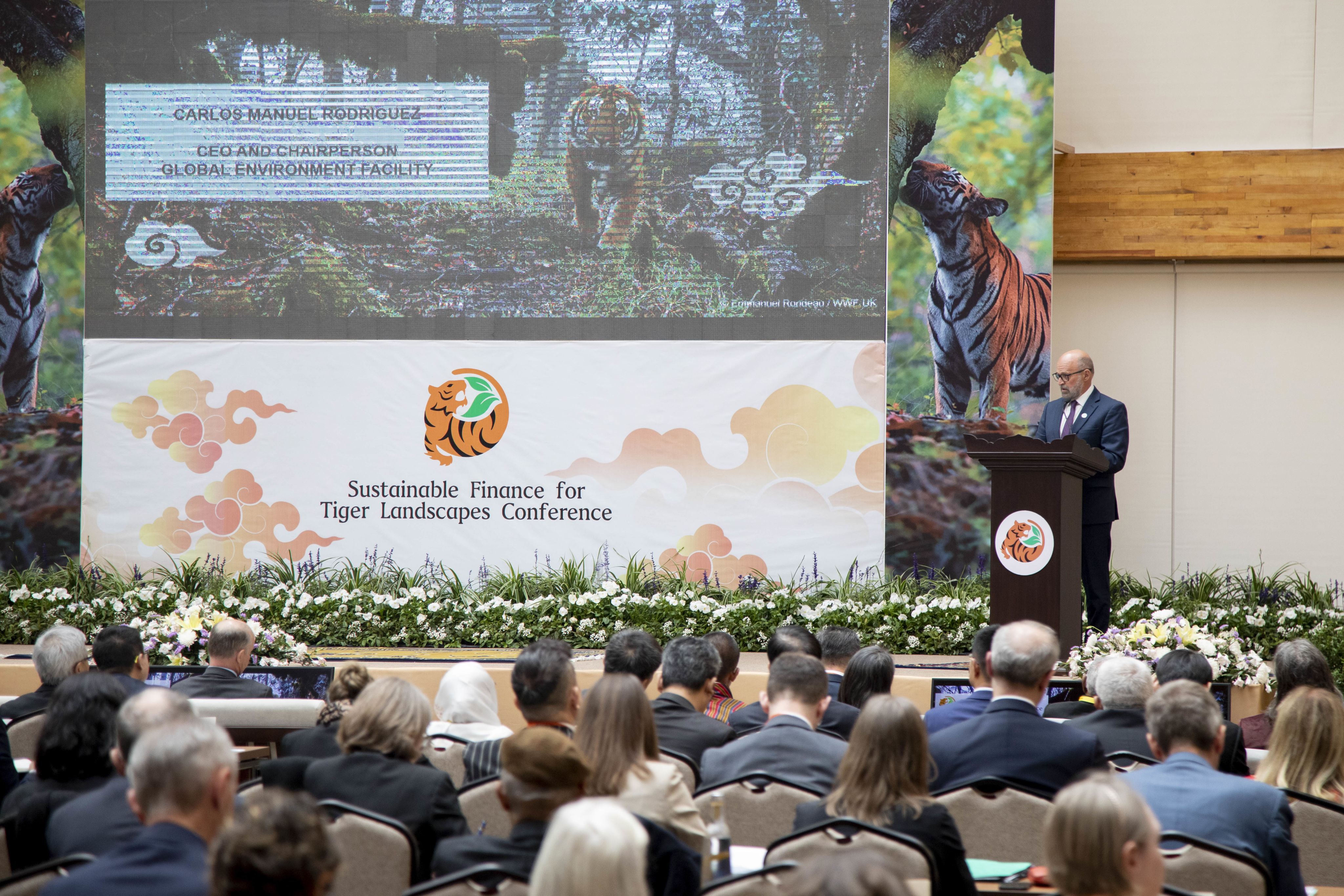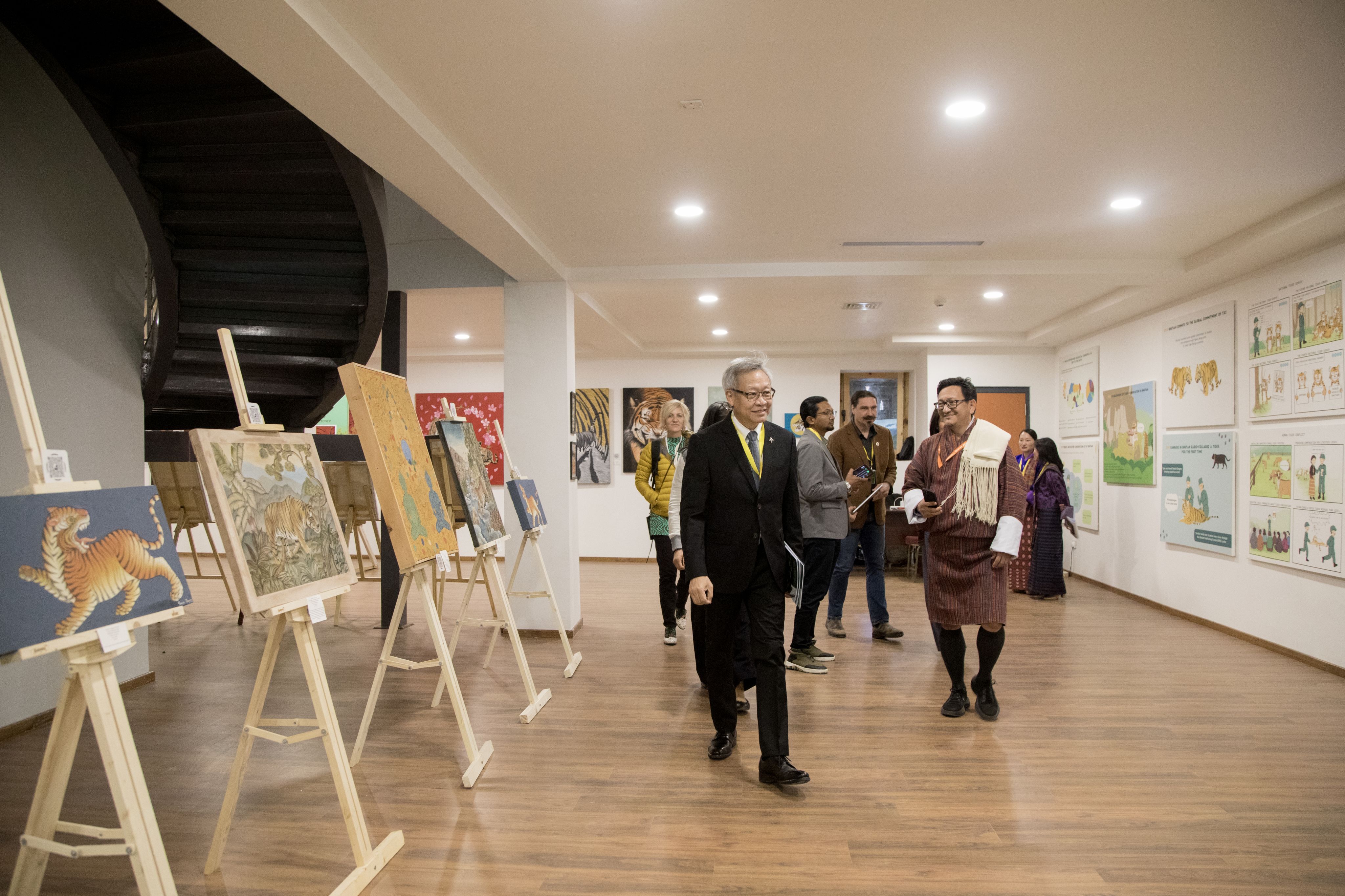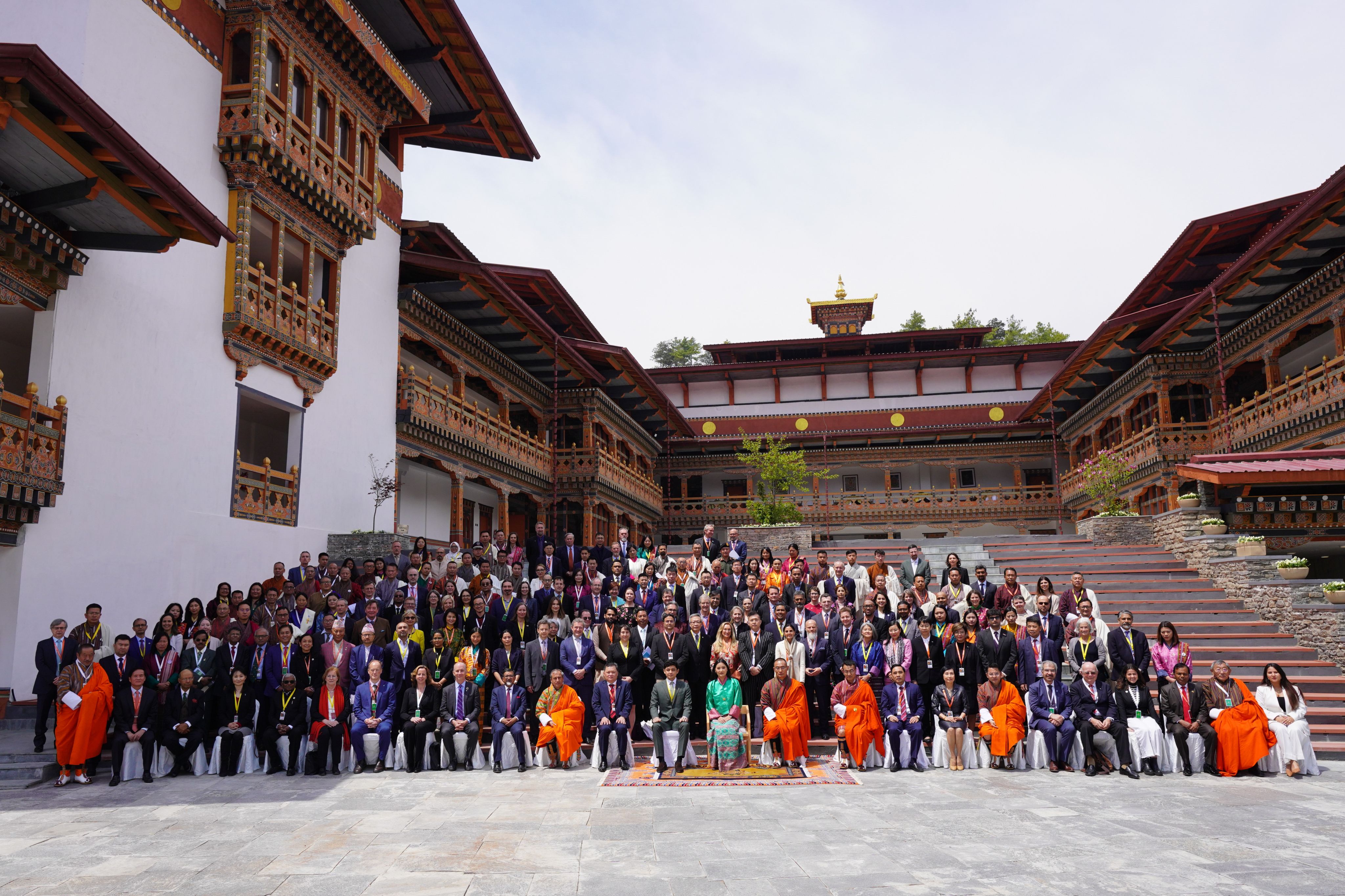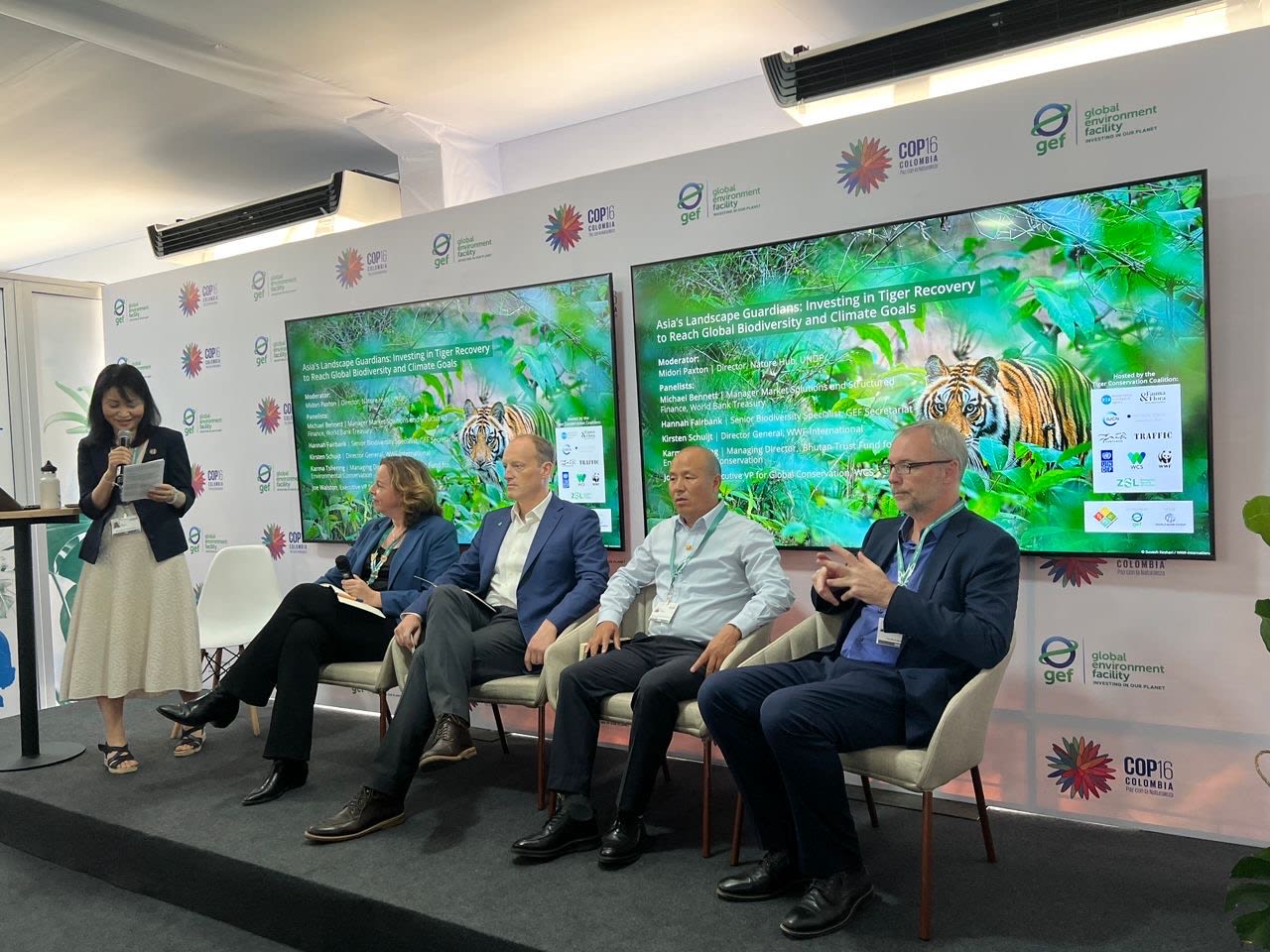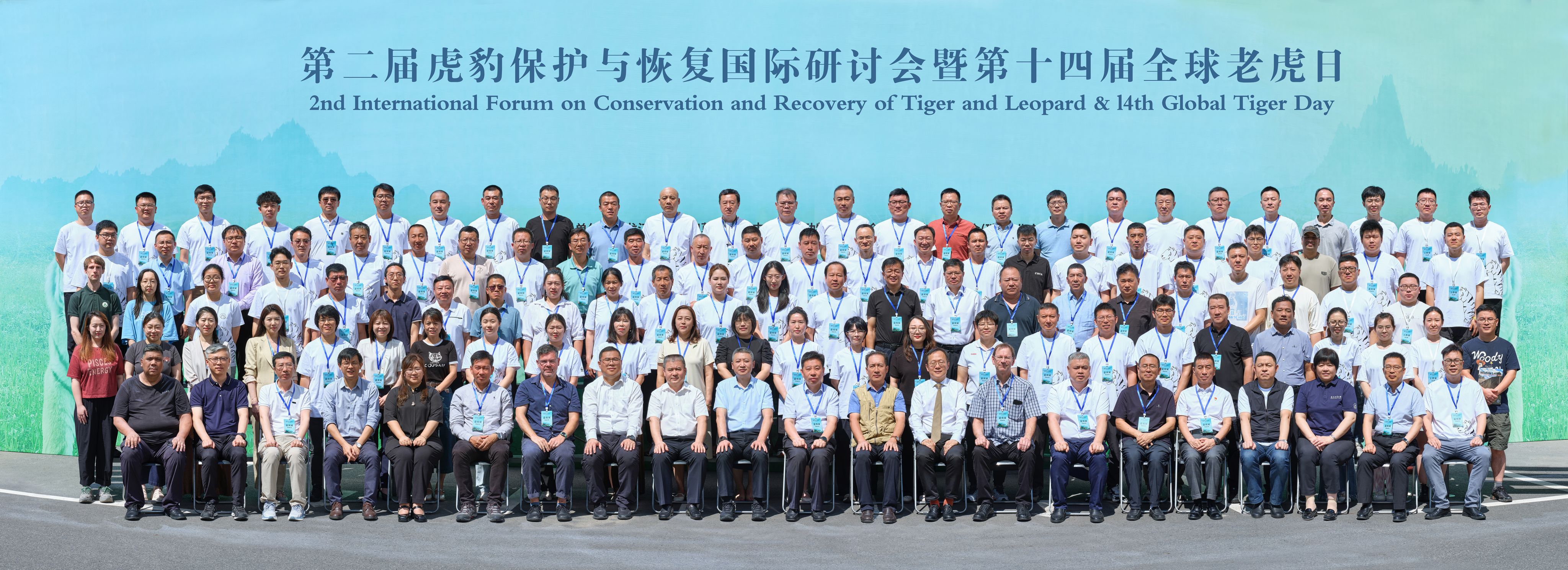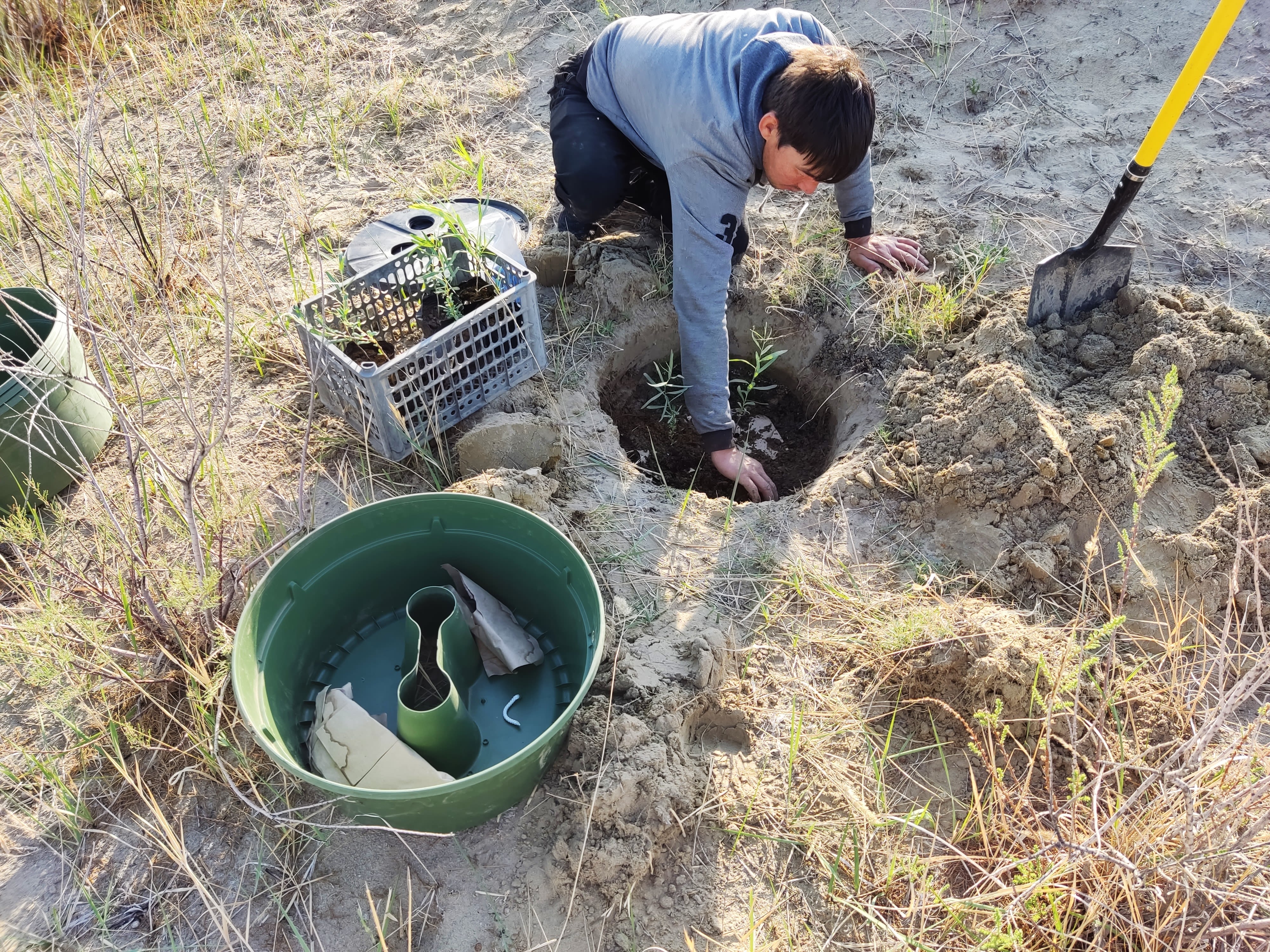Unlock capitals

The recovery of global tiger populations hinges upon a multifaceted approach that incorporates public support, financial capital and government will. Advocacy serves as the cornerstone, fostering awareness and mobilising communities to actively engage in conservation efforts, while the infusion, or lack thereof, of financial capital can make or break endeavours as delicate as the preservation of an apex predator.
FEATURE STORY
Sustainable Financing for Tiger Landscapes Conference
The Sustainable Finance for Tiger Landscapes Conference was held in Paro, Bhutan on 22 and 23 April. Co-organised by the Royal Government of Bhutan and the Tiger Conservation Coalition, this two-day conference brought together conservation finance thought-leaders, practitioners, and decision-makers with representatives of multilateral organisations, local community and civil society groups, the private sector, and governmental representatives.
Ten tiger range countries sent delegations to the conference; many of which were sizable and incorporated a diverse array of expertise.
The event was opened with a ceremony and address by Her Majesty The Queen of Bhutan, Jetsun Pema Wangchuck, the Royal Patron of the conference. This was followed by a Special Address from The Crown Prince of Pahang, where he outlined his ambitions for enhancing tiger conservation in Malaysia.
Her Majesty The Queen of Bhutan, Jetsun Pema Wangchuck
Her Majesty The Queen of Bhutan, Jetsun Pema Wangchuck
Other keynote speakers included a global environmental champion, His Excellency the Prime Minister of Bhutan, Tshering Tobgay, as well as Carlos Manuel Rodríguez, the CEO of Global Environment Facility (GEF), the world’s biggest biodiversity fund. WWF was represented by Director General Kirsten Schuijt and WWF US President Carter Roberts. Collectively, the speakers and panelists, including leaders in the financial sector, shone a spotlight on tigers and their potential to maximize contributions to global biodiversity, climate, and sustainable development agendas.
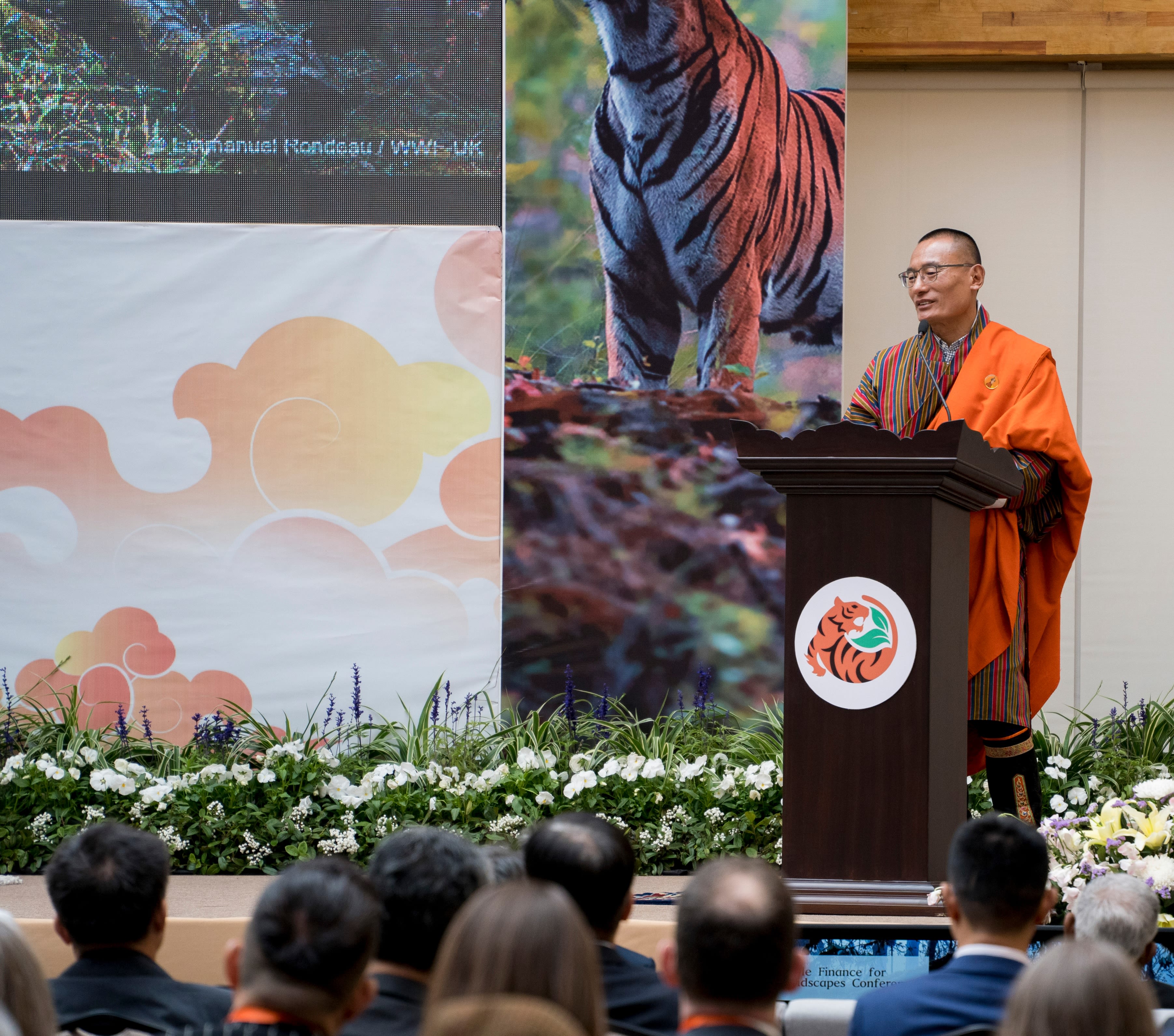
What is sustainable financing and how will it help tigers?
Sustainable financing for conservation areas means investment decisions are made with environmental and social impacts in mind, and the awareness that successful conservation initiatives take time and investment. For tiger habitats, this comprises adequate, long-term investments in tiger conservation by public and private sectors that support clearly defined tiger conservation goals. It ensures tiger landscapes are climate-resilient and that there are environmental, social and economic benefits for the region.
To recover tiger numbers and restore their ecosystems, this approach involves collaboration between countries where tigers live, donors (both private and public) outside of tiger range countries, international agencies, and NGOs. Sustainable financing for tiger landscapes will develop and replicate successful conservation finance models, such as Bhutan for Life. At the same time, it must inspire large-scale investments for sustainable economic development in these areas. And all this must be implemented through full partnership and participation with Indigenous Peoples and local communities in the areas where such investments are made.
Carlos Manuel Rodríguez CEO and Chairperson, Global Environment Facility. ©Lasola Creatives _ RGoB _ Tiger Conservation Coalition
Carlos Manuel Rodríguez CEO and Chairperson, Global Environment Facility. ©Lasola Creatives _ RGoB _ Tiger Conservation Coalition
©Lasola Creatives _ RGoB _ Tiger Conservation Coalition
©Lasola Creatives _ RGoB _ Tiger Conservation Coalition
Her Majesty The Queen of Bhutan with conference dignitaries and participants. © Royal Office for Media
Her Majesty The Queen of Bhutan with conference dignitaries and participants. © Royal Office for Media
An outcome for future generations
The conference closed with the Paro Statement - aiming to catalyse an additional 1 billion USD (from all sources) for tiger conservation by 2034 - addressing a critical and persistent gap in the funding of biodiversity conservation across tiger landscapes. The commitment read by the Royal Government of Bhutan with the support of the Tiger Conservation Coalition stands as an invitation and call for governments, financial institutions, NGOs and interested parties to join in the historic endeavour.
To support the achievement of this ambitious target WWF is working with the nine partners of the Tiger Conservation Coalition on a strategic plan and on specific tools and mechanisms such as a Tiger Landscape Investment Fund, “Tiger Credits”, Project Finance for Permanence and landscape level sustainable finance assessments.
To further emphasize the linkages between tiger landscape investments and global goals, the Tiger Conservation Coalition hosted a side-event at the Global Environment Facility (GEF) Pavilion during the Finance and Biodiversity Day of CBD COP-16 in Colombia. The event brought together a high-level panel of experts to further discussions on innovative financing approaches for tiger landscapes, and outline why a whole-of-government and whole-of-society approach will be critical towards realising such efforts.
The event was moderated by Midori Paxton, Director, Nature Hub, UNDP and the high-level panel consisted of:
- Michael Bennet, Manager, Market Solutions and Structured Finance, World Bank Treasury
- Hannah Fairbank, Senior Biodiversity Specialist GEF Secretariat
- Kirsten Schuijt, Director General, WWF International
- Karma Tshering, Managing Director, Bhutan Trust Fund for Environmental Conservation
- Joe Walston, Executive VP for Global Conservation, WCS
© WWF
© WWF
Youth Art Competition Results Announced
The Tiger Conservation Coalition invited children from tiger range countries to showcase their creative interpretations of the complex, yet inspiring relationship between people and tigers. 90 pieces of art from youth across five tiger range countries were submitted to the competition, titled ‘Tigers as my Neighbour’, and winners were selected from two age categories 5-8 and 9-12.
In July, WWF Malaysia and Maybank held a fun run to raise awareness and funds for national tiger conservation efforts. There were over a 1,000 participants and it was officiated by YB Tuan Nik Nazmi bin Nik Ahmad, Minister of Natural Resources and Environmental Sustainability, who also participated in the run. © WWF Malaysia
In July, WWF Malaysia and Maybank held a fun run to raise awareness and funds for national tiger conservation efforts. There were over a 1,000 participants and it was officiated by YB Tuan Nik Nazmi bin Nik Ahmad, Minister of Natural Resources and Environmental Sustainability, who also participated in the run. © WWF Malaysia
WWF-Malaysia STRENGTHENS PRIVATE SECTOR PARTNERSHIPS
WWF Malaysia’s renewed partnerships with Maybank and Procter & Gamble represent a steadfast commitment to Malayan tiger conservation in the Belum-Temengor Forest Complex. Building on the success of previous efforts, these collaborations focus on strengthening protection through community ranger patrols, enriching habitats to boost prey populations, and addressing human-tiger conflicts to promote coexistence. Significant milestones, such as achieving zero active snares since 2022 and Royal Belum State Park’s recognition as the first CA|TS-accredited site in Malaysia and Southeast Asia, underscore the impact of these partnerships. By advancing comprehensive initiatives, WWF Malaysia, with the support of its partners, continues to safeguard the critically endangered Malayan tiger while preserving ecological balance and supporting local communities.
The 2nd International Forum on Conservation and Recovery of Tiger and Leopard, China
On Global Tiger Day, July 29, the 2nd International Forum on Conservation and Recovery of Tiger and Leopard opened in Harbin, China. The conference was jointly organized by Heilongjiang Forestry and Grassland Administration, China Wildlife Conservation Association, WWF, Northeast Forestry University, and Jilin Agricultural University with 150 people attending.
©WWF-China
©WWF-China
The conference closed with the Harbin Initiative which calls on the global community to collaborate on the recovery of wild tiger and Amur leopard populations, aiming for harmonious coexistence between humans and wildlife. It stresses the need to protect habitats, improve law enforcement, enhance research and technology, and foster partnerships with businesses, organizations, and the public to advance conservation efforts and reduce human-wildlife conflict.
The forum and Global Tiger Day was reported by China’s major media, including China News Agency and China Daily, culminating in a reach of over 210 million people. To further awareness of tiger conservation in northeast China, WWF invited celebrity Lei Jiayin to Northeast China Tiger Leopard National Park to film a short documentary and partnered with Xinhua News Agency on their Global Tiger Day live online show in English and Mandarin achieving more than 1 million views.
Amur leopards in Northeast China Tiger and Leopard National Park. ©NCTLNP Dongning FGB
Amur leopards in Northeast China Tiger and Leopard National Park. ©NCTLNP Dongning FGB
WWF China will continue to support key actions of tiger and leopard conservation, effectively managing and protecting the most critical wild tiger and leopard habitats, connecting these habitats, managing human-wildlife conflict, and conducting anti-poaching activities.
© WWF Central Asia
© WWF Central Asia
Memorandum signed between WWF and the Republic of Kazakhstan for tiger reintroduction
A Memorandum of Cooperation on the ‘Tiger Reintroduction Programme in the Republic of Kazakhstan’ was signed between the Ministry of Ecology and Natural Resources and WWF on July 15, 2024. This signing follows on many years of preparation, including extensive habitat and prey restoration efforts in the Ile-Balkhash Nature Reserve.



